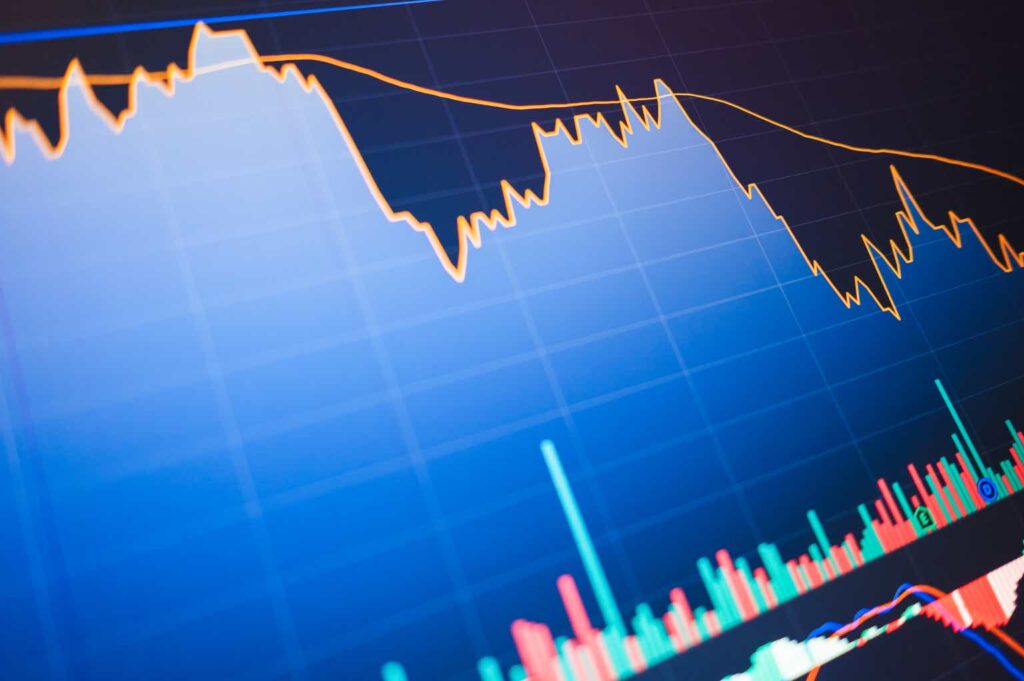Where To Invest Now: Rising Emerging Markets And Bitcoin

primeimages/E+ via Getty Images
As we ushered in 2023, our outlook was shaped by the constriction of monetary supply, tight government spending and weaker corporate profits. Do recent events change our high-level view? Not really. So far, it has paid to be invested and we continue to believe inflation will keep rates higher for longer than the market expects. Our macroeconomic outlook remains steadfast. Yet, amid these broader market dynamics, two areas stand out: rising emerging markets stars and Bitcoin.
“New” EM Countries on the Rise: India, Brazil, and Saudi Arabia
Demographics, technology and the rising middle class have transformed emerging markets (EM), where 87% of the world’s population live.1 77% of the world’s “Gen Z” contingent resides in emerging markets as well. Emerging markets are estimated to be responsible for ~60% of the world’s GDP by 2026,2 yet their equity markets only represent 13% of the market capitalization of all international equities.3 This mismatch creates a once-in-a-lifetime, long-term opportunity for global investors – as emerging markets grow, evolve and transform, the size of their capital markets will become more prominent over time as well.
While China remains a dominant market and has been a major global growth driver, its post-COVID rebound has stalled. Looking beyond China, we explore below the three rising emerging market countries where we see particularly compelling investment opportunities. India, Brazil and Saudi Arabia are leaders in their respective regions, all benefitting from economic reforms and digitization initiatives.
These Three Regional Leaders Will Pass the EU in 10 Years
Share of Global GDP (PPP basis, %)
Source: VanEck Research; IMF; Bloomberg LP, as of July 2023.
India’s Digital Gold Rush Fuels Economic Rise
India’s digitization journey is revolutionizing multiple sectors, and economic reforms and demographic trends provide further tailwinds to its growth. India’s 800 million smartphone users and rapidly growing population presents growth opportunities across the digital sector, including e-commerce, digital payments and online entertainment.
India’s Smartphone Penetration Fuels Digital Revolution
Source: TRAI, CLSA, World Economic Forums “Future of Consumption in Fast-Growth Consumer Markets: India” as of June 2023.
India’s government has also launched initiatives to promote financial inclusion and fintech. The rapidly spreading adoption of digital financial services is helping to create an environment more conducive to investment. In addition, the country’s demographic “dividend” may provide it a competitive edge in the global landscape. Its workforce is relatively young, large and English-proficient—particularly compared to China—and combined with a growing consumer base, we believe India is an attractive market for both businesses and investors.
India’s Equity Market Surpasses China
Source: Morningstar as of 6/30/23. Past performance is no guarantee of future results.
The equity market in India is also thriving, significantly outperforming China over the last three years, and its corporate earnings growth outpaces China. We believe this reflects strong economic fundamentals and positive investor outlook towards India’s economic prospects. A look at valuations also reinforce why we believe India presents a compelling opportunity now. After a period of overvaluation during the COVID-19 pandemic, valuations are back within a more normal range.
Valuations in India Back to Normal
Source: Bloomberg as of 6/30/2023.
Brazil’s Booming Investment Potential
The Central Bank of Brazil has embarked on an ambitious journey to modernize its financial landscape. These financial reforms are creating a friendlier environment for both domestic and foreign investors, which in turn is pushing the economic engine of the country forward.
In addition, the Brazilian Central Bank is fiercely independent, and sticks to orthodox policies. By employing an inflation-targeting regime and not hesitating to raise the policy rate to combat price pressures the bank is maintaining a lower and stable inflation rate. This offers a sense of reliability and creates a credible policy backdrop—essential factors for investors. By striving to keep inflation within the target range, Brazil is ensuring the preservation of purchasing power, thereby safeguarding the value of investments.
Brazil’s challenge is to make sure that a new fiscal framework stabilizes and reduces the public debt-to-GDP ratio over time. Finance minister Hadad’s economic measures to reduce the primary fiscal deficit for 2023 in half from the expected $46 billion or 2.1% of GDP to $20 billion or 1% of GDP appears to be a net positive for the stock market.4 If successful, these factors could create a positive tailwind for Brazil equities and strengthen the fundamental support for BRL that could add to the real rates of return for international investors.
We are particularly excited about the prospects of structural growth opportunities for companies that appear to benefit from improving the valuation of Brazilian equities.
Saudi Arabia’s Progressive Economic and Social Leaps
Saudi Arabia is at the epicenter of transformative economic and social changes. From empowering women to diversifying its economy and enhancing capital discipline, this Middle Eastern powerhouse is making headway. A potential peace pact with Iran further underscores the country’s commitment to stability. As a result, Saudi Arabia is beckoning global investors to capitalize on its progressive reforms and to partake in the country’s growth story.
Saudi Arabia’s liberalization of women’s rights is a historic milestone that not only impacts the social fabric of the nation but also its economic vitality. Women have become increasingly involved in the workforce and entrepreneurial ventures, contributing significantly to the nation’s GDP and enhancing the diversity and competitiveness of the business landscape. This socio-economic transformation opens doors for potential investors looking for emerging markets primed for accelerated growth.
Saudi Arabia: Women in the Workforce – Female Participation Ratio
Source: World Bank as of 12/30/2022.
The Saudi Vision 2030 marks a pivotal point in the country’s economic history. At its core, the strategic roadmap aims to shift the Saudi economy away from its dependence on oil. Instead, it encourages investment in diverse sectors such as technology, tourism, entertainment, and renewable energy. For investors, this indicates an array of opportunities in rapidly expanding and innovative sectors.
Saudi Arabia’s renewable energy sector, in particular, is a notable area of growth, as the country aims to become a global powerhouse in this field. This aligns with the global transition towards sustainable energy sources and provides investors with long-term, socially responsible investment opportunities.
Saudi Arabia’s increasing reliance on capital markets has introduced a new dynamism into its economic environment. The country has encouraged competition, enhanced capital discipline, and facilitated an environment conducive for investors. In a region often marred by geopolitical tensions, the potential Saudi-Iran peace pact is a bright spot. By reducing regional tensions and encouraging stability, the pact could significantly de-risk investment in the country.
Now Let’s Turn from Emerging Markets to an Emerging Asset: Bitcoin
In 2017, we identified Bitcoin’s (BTC-USD) potential to rival gold and were one of the first to file for a Bitcoin ETF in the U.S. We have maintained an unwavering commitment to embracing Bitcoin as an emerging asset class with a role to play in investor portfolios. Our advocacy is deeply rooted in the firm’s mission to offer forward-looking intelligently designed products—which began with our launch of the first gold stock fund in the U.S. in 1968.
Due to its scarcity value, Bitcoin can act as a competitor or companion to gold, representing a store of value and hedge against inflation. We are approaching the next Bitcoin “halving”—which is a 50% block reward cut to the Bitcoin production rate that occurs roughly every four years. This slows the rate that new Bitcoins are introduced into circulation. Historically, Bitcoin has rallied leading up to and following a halving. Bitcoin rallied in the first half of 2023, and we remain bullish for the remainder of the year.
Prior Cycles Suggest Bitcoin May Rally Around Next Halving
Source: Arcana.
Data as of 2/4/2023. Past performance is not indicative of future results. Not a recommendation to buy or sell any of the names mentioned herein. Click to enlarge
IMPORTANT DISCLOSURES
1 Source: Oxford Business Group, UN Youth Development and Participation. Data as of 2020.
2 Source: IMF. Data as of April 2021.
3 Source: MSCI. Data as of June 2021.
4 Haddad unveils plan to cut Brazil’s 2023 deficit below $20 bln.
Coin Definitions
Bitcoin (BTC) is a decentralized digital currency, without a central bank or single administrator, that can be sent from user to user on the peer-to-peer bitcoin network without the need for intermediaries.
Index Definitions
MSCI India Index is designed to measure the performance of the large and mid-cap segments of the Indian market.
IISL Nifty 50 Index measures the performance of the top 50 blue-chip companies on the National Stock Exchange, as per their market capitalization.
CSI 300 Index is comprised of the 300 largest and most liquid stocks in the Chinese A-share market.
MSCI China Index captures large and mid cap representation across China H shares, B shares, Red chips, P chips and foreign listings (e.g. ADRs).
S&P BSE Sensex Index is a free-float market-weighted stock market index of the 30 largest, most liquid and financially sound companies listed on the Bombay Stock Exchange.
Please note that VanEck may offer investment products that invest in the asset class(es) or industries included in this blog.
This is not an offer to buy or sell, or a recommendation to buy or sell any of the securities, financial instruments or digital assets mentioned herein. The information presented does not involve the rendering of personalized investment, financial, legal, tax advice, or any call to action. Certain statements contained herein may constitute projections, forecasts and other forward-looking statements, which do not reflect actual results, are for illustrative purposes only, are valid as of the date of this communication, and are subject to change without notice. Actual future performance of any assets or industries mentioned are unknown. Information provided by third party sources are believed to be reliable and have not been independently verified for accuracy or completeness and cannot be guaranteed. VanEck does not guarantee the accuracy of third party data. The information herein represents the opinion of the author(s), but not necessarily those of VanEck or its other employees.
Emerging Market securities are subject to greater risks than U.S. domestic investments. These additional risks may include exchange rate fluctuations and exchange controls; less publicly available information; more volatile or less liquid securities markets; and the possibility of arbitrary action by foreign governments, or political, economic or social instability.
Investments in digital assets and Web3 companies are highly speculative and involve a high degree of risk. These risks include, but are not limited to: the technology is new and many of its uses may be untested; intense competition; slow adoption rates and the potential for product obsolescence; volatility and limited liquidity, including but not limited to, inability to liquidate a position; loss or destruction of key(s) to access accounts or the blockchain; reliance on digital wallets; reliance on unregulated markets and exchanges; reliance on the internet; cybersecurity risks; and the lack of regulation and the potential for new laws and regulation that may be difficult to predict. Moreover, the extent to which Web3 companies or digital assets utilize blockchain technology may vary, and it is possible that even widespread adoption of blockchain technology may not result in a material increase in the value of such companies or digital assets.
Digital asset prices are highly volatile, and the value of digital assets, and the companies that invest in them, can rise or fall dramatically and quickly. If their value goes down, there’s no guarantee that it will rise again. As a result, there is a significant risk of loss of your entire principal investment.
Digital assets are not generally backed or supported by any government or central bank and are not covered by FDIC or SIPC insurance. Accounts at digital asset custodians and exchanges are not protected by SPIC and are not FDIC insured. Furthermore, markets and exchanges for digital assets are not regulated with the same controls or customer protections available in traditional equity, option, futures, or foreign exchange investing.
Digital assets include, but are not limited to, cryptocurrencies, tokens, NFTs, assets stored or created using blockchain technology, and other Web3 products.
Web3 Companies include but are not limited to, companies that involve the development, innovation, and/or utilization of blockchain, digital assets, or crypto technologies.
All investing is subject to risk, including the possible loss of the money you invest. As with any investment strategy, there is no guarantee that investment objectives will be met and investors may lose money. Diversification does not ensure a profit or protect against a loss in a declining market. Past performance is no guarantee of future performance.
© 2023 Van Eck Securities Corporation, Distributor, a wholly owned subsidiary of Van Eck Associates Corporation.
Click to enlarge
Editor’s Note: The summary bullets for this article were chosen by Seeking Alpha editors.
Source link
#Invest #Rising #Emerging #Markets #Bitcoin





